▼ National steering committee to initiate SVAROP [07-31-17]
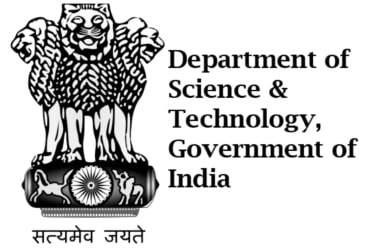 The Department of Science and Technology (DST), Government of India has constituted a National Steering Committee to initiate a National Programme on “Scientific Validation and Research on Panchgavya” (SVAROP). The Department of Science and Technology (DST), Government of India has constituted a National Steering Committee to initiate a National Programme on “Scientific Validation and Research on Panchgavya” (SVAROP).
Central Council for Research in Ayurvedic Sciences (CCRAS), an autonomous Ayurvedic research organization of the Central Government, has undertaken study to evaluate the immune-modulatory activity and safety/toxicity of Panchgavya Ghrita.
This is an Ayurvedic formulation made from cow’s five products (milk, curd, ghee, urine and dung) as mentioned in Ayurvedic classical texts and Ayurvedic Formulary of India, Part I.
Central Council for Research in Ayurvedic Sciences has conducted a National Seminar on Panchgavya Chikitsa in the year 2014 for promotion and awareness building and brought out a compilation document of published research papers on Panchagavya and its ingredients.
The published research papers on Panchagavya have been uploaded in the ‘AYUSH Research Portal’ for ready access to the public.
|
▼ DRDO develops first unmanned remote operating tank, Muntra [07-31-17]
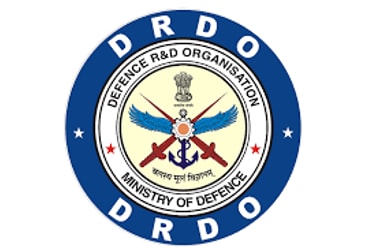 Government agency Defence Research and Development Organisation (DRDO) has developed India's first unmanned tank that can remotely operate and has named it ‘Muntra’. Government agency Defence Research and Development Organisation (DRDO) has developed India's first unmanned tank that can remotely operate and has named it ‘Muntra’.
The agency has developed the tank in three different variants to tackle any kind of situation- for surveillance, another for mine detection and a third variant for reconnaissance in areas with nuclear and bio threats.
The tank which is a first of its kind in the country has been developed and tested by Combat Vehicles Research and Development Establishment (CVRDE) in Avadi for the army.
The paramilitary has expressed its interest in using them in the areas that have been affected by the Naxals.
Recently two vehicles that have been designed like an armoured tank were recently displayed at the Science for Soldiers exhibition that was organised by DRDO as a tribute to former President APJ Abdul Kalam, who was also known as the Missile Man of India.
During the testing of the vehicle, it was found that its surveillance radar that includes an integrated camera can be used to spy on targets that are 15 km away.
More about the variants of the unmanned tank ‘Muntra’-
Muntra S – This variant has been developed to carry out unmanned surveillance missions.
Muntra M – This variant has been developed for detecting mines.
Muntra N – This variant will be deployed in areas where nuclear radiation or the risk of bio weapons is high.
The tanks have been tested and validated at Mahajan field firing range in Rajasthan.
The Muntra tanks have surveillance radar, an integrated camera along with laser range finder, which can be used to spy on ground target about 15 kilometres away.
Besides heavy weights, the DRDO also showcased a few inventions like a handheld wall penetration radar which if placed on a wall will project on a screen the presence of people inside a building.
DRDO is now working on installing AWAC (Airborne Early Warning and Control System) on an A330 aircraft.
The system is now perfected for use on a smaller Embraer plane.
|
▼ China produces flammable ice/natural gas from methane hydrate [07-31-17]
 China has successfully produced natural gas from methane hydrate, also known as “flammable ice”, in an experimental project in the South China Sea (SCS). China has successfully produced natural gas from methane hydrate, also known as “flammable ice”, in an experimental project in the South China Sea (SCS).
As part of the experiment, a drilling platform had produced a total of 309,000 cubic metres of natural gas from gas hydrate in 60 days.
Methane hydrate has been identified as a potential new gas source for China, with the South China Sea thought to contain some of the world’s most promising flammable ice deposits.
India, Canada and US are also believed to be looking at hydrates as an alternative energy source.
Flammable ice (also known as methane hydrate or methane clathrates) consists of methane trapped within water crystals.
It is the world’s largest natural gas resource is trapped beneath permafrost and ocean sediment where low temperature and moderate pressure combine to trap methane in this specific way.
The methane hydrate is highly flammable and energy-intensive fuel as one cubic metre of the compound can releases about 160 cubic metres of gas.
It can break down into water and methane after temperature is raised or pressure is lowered.
It is likely to be the world’s last great source of carbon-based fuel and has potential to be a revolutionary energy source that could cater future energy needs.
Its vast deposits exist underneath all oceans around the globe, especially on the edge of continental shelves.
|
▼ Sagar Vani app launched, for timely tsunami warning [07-28-17]
 Minister of Science & Technology, Earth Sciences and Environment, Forests & Climate Change, Dr. Harshvardhan launched an app “Sagar Vani” on the occasion of Foundation Day of Ministry of Earth Sciences in New Delhi. Minister of Science & Technology, Earth Sciences and Environment, Forests & Climate Change, Dr. Harshvardhan launched an app “Sagar Vani” on the occasion of Foundation Day of Ministry of Earth Sciences in New Delhi.
ESSO-Indian National Centre for Ocean Information Services (INCOIS) under Ministry of Earth Sciences (MoES) provides ocean information services for the benefit of various user communities in the country.
The services are more fruitfully utilized when the advisories reaches the end user in timely manner and in user readable format.
Now-a-days ICT facilities in the country are accessible to large population of the country and that plays a major role in effective dissemination of information to the end user.
ESSO-INCOIS has adopted the state-of-the-art technologies and tools available in the country for the timely dissemination of Ocean Information and Advisory Services.
This includes Potential Fishing Zone (PFZ) advisories, Ocean State Forecast (OSF), High Wave Alerts and Tsunami early warnings.
There are 3288 marine fishing villages and 1511 marine fish landing centres with marine fisher folk population of 3,999,214.
About 37.8% (1,511,703) of marine fisher folk are engaged in active fishing.
About 927,120 fishermen were involved in actual fishing either full or part time.
ESSO-INCOIS is serving about 3.17 lakhs of users directly through in-house efforts as well as through the partnering organizations including NGO’s and there is yet to cover.
Hence, it is necessary to target the reach of information to the 9.27 lakh involved in actual fishing either full or part time.
Presently, the advisories are being disseminated to the stakeholders from different service sections and through various stakeholders and partners, which might cause delay in dissemination of the services. I
n order to effectively and timely disseminate the advisories, directly from the lab to the end user, an Integrated Information Dissemination System (IDS) named as “SAGAR VANI” has been developed by ESSO-INCOIS through the Industry M/s. Gaian Solutions Pvt. Ltd.
This ‘Sagar Vani’ system compares with the most advanced countries’ services in terms of speed of delivery, omni channel capabilities and diverseness of services.
With this system, the services will be disseminated in local languages using advanced artificial intelligence and machine learning capabilities.
For the first time in India, we are also using the power of television and cable network mediums for topical and alert dissemination services.
The ‘Sagar Vani’ will now serve the coastal community, especially the fishermen community with the advisories and alerts towards their livelihood as well as their safety at Sea.
Sagar Vani: Know More
- The ‘Sagar Vani’ is a software platform where various dissemination modes will be integrated on a single central server.
- The ‘Sagar Vani’ includes Multi Lingual SMS, Voice Call / Audio Advisory, Mobile Apps (User / Admin modules), Social Media (Facebook, Twitter, etc.), Email, GTS, Fax, Digital Display Boards, Radio / Television broadcast units, IVRS, Cloud Channels, etc.
- The system also has facility to provide access to various stakeholders (NGOs, State Fishery Departments, Disaster Management Authorities, etc.).
- This is so that they too will be able to further disseminate these ocean information and alerts to the user community.
|
▼ India Quake: New app for detecting earthquakes [07-28-17]
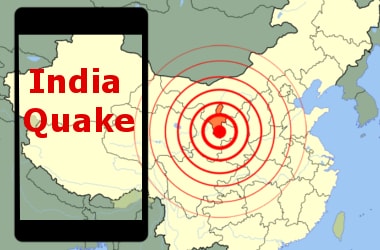 Union Minister of Science & Technology, Earth Sciences and Environment, Forests & Climate Change, Dr. Harshvardhan launched an app “India Quake” on the occasion of Foundation Day of Ministry of Earth Sciences in New Delhi on 27th July. Union Minister of Science & Technology, Earth Sciences and Environment, Forests & Climate Change, Dr. Harshvardhan launched an app “India Quake” on the occasion of Foundation Day of Ministry of Earth Sciences in New Delhi on 27th July.
National Centre for Seismology (NCS) operates national seismological network with 84 stations.
These stations are connected to NCS headquarter through VSAT for real time data communication.
In the event of an earthquake NCS locates them using data from its network and disseminate earthquake parameters to all the concerned government department and other stake holders through SMS, email and fax.
However this causes some delay in dissemination and also restricts the number of recipients.
To overcome this, a Mobile App has been developed by the NCS for automatic dissemination of earthquake parameter (location, time and magnitude) after the occurrence of earthquakes.
The App will make information dissemination faster with no restrictions on the number of recipients. Any citizen can download this App and get the real time earthquake location information on his/her mobile.
Other than scientific and administrative benefits of the App, it will help in reducing panic amongst people during an earthquake.
For example, if an earthquake occurs in Hindukush region, Afghanistan and is strongly felt in Delhi, then people in Delhi will know in less than 2 minutes that the earthquake has actually occurred in Afghanistan and not in Delhi.
There are two categories of events here, scrutinized and unscrutinized. Unscrutinized events are the earthquake whose parameters have been estimated automatically by the software using the incoming waveform data from remote stations.unscrutinised
These solutions are scrutinized and confirmed by the NCS, which form the category of scrutinized events.
|
▼ Meet AI software Surfnet, for creating 3D models from 2D snaps! [07-28-17]
 Scientists including one of Indian origin have developed new artificial intelligence (AI) software called SurfNet that can create three dimensional (3D) models from 2D photographs. Scientists including one of Indian origin have developed new artificial intelligence (AI) software called SurfNet that can create three dimensional (3D) models from 2D photographs.
When fully developed SurfNet could have significant applications in the fields of 3D searches on the internet researchers.
In an advance version it can allow future robots to navigate in the real world.
SurfNet software using hundreds of thousands of 2D shapes of objects can reconstruct it model in 3D.
It utilizes machine learning to analyse 2D shapes and convert them into projected 3D forms.
In addition to transforming 2D shapes, the technology can also merge two shapes into one another. The technology becomes more refined over time as the AI learns more about the shapes.
Future potential application: It can be used in robotics, object recognition and even self-driving cars.
SurfNet will give them ability to understand the 3D environment around them using standard 2D cameras. It can also be used to create 3D content for virtual reality (VR) and augmented reality (AR) by simply using standard 2D photos.
AI: Know More
- Artificial intelligence is the branch of computer science concerned with making computers behave like humans.
- In contrast to normal hardware and software, AI enables a machine to perceive and respond to its changing environment.
- It is also called super intelligence
|
▼ Now, a new species of Lanternshark that glows in the dark! [07-27-17]
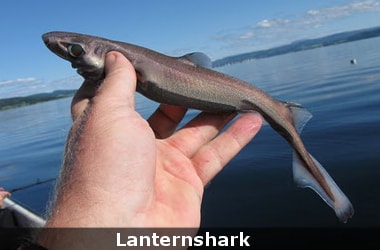 A new species of shark has been discovered by a team of scientists in the depths of the Pacific Ocean. A new species of shark has been discovered by a team of scientists in the depths of the Pacific Ocean.
Etmopterus lailae, a member of the Lanternshark family, is a miniature shark weighing less than 2 pounds and under a foot in length that glows in the dark.
The species was first encountered 17 years ago at a depth of 1,000 feet, but like many discoveries the process of identifying a new species takes many years within the scientific community.
When the shark was first encountered scientists did not realize they had discovered a new species.
It was only after submitting their findings to a journal that the reviewers suggested it was a new species of shark. As there are only 450 species of sharks it is rare to discover a new one.
Some of the features that set Etmopterus lailae apart from other lanternsharks are its odd-shaped head, arched snout, and bioluminescent abilities.
Scientists believe the larger snout is helpful in locating food in an environment with very little light.
While it is difficult to study a species that lives in the ocean depths scientists have come up with several hypotheses for the bioluminescent underbelly of this shark and they cary from mating recognition to camouflage and luring prey.
This miniature, “glow-in-the-dark” shark is a member of the Lanternshark family (Squaliformes: Etmopteridae), which was serendipitously found 1,000 feet below the Pacific Ocean off the coast of the Northwestern Hawaiian Islands.
There are only about 450 known species of sharks worldwide and you don't come across a new species all that often.
A large part of biodiversity is still unknown, so for us to stumble upon a tiny, new species of shark in a gigantic ocean is really thrilling.
This species is very understudied because of its size and the fact that it lives in very deep water. They are not easily visible or accessible like so many other sharks.
Identifying the Etmopterus lailae required an extensive list of measurements, diligent categorization and thorough comparisons with other museum specimens.
Some of the other distinctive characteristics of this new species are its flank markings that go forward and backward on their bellies.
Also there is a naked patch without scales on the underside of its snout, as well as internal differences such as the number of vertebrae they have as well as fewer teeth than the other sharks.
Like other Lanternsharks, the Etmopterus lailae is bioluminescent and the flanks on the bottom of its belly glow in the dark. These markings on its belly and tail also were specific to this new species.
There are a number of hypotheses for why Lanternsharks glow in the dark including mate recognition to ensure they are mating with the right species.
This serving as a form of camouflage to protect them from predators in the deep sea and using bioluminescence to act as a lure to attract little fish or shrimp.
Why Do Sharks Glow?: Know More
- There are about 550 species of shark in the oceans. Around twelve percent of them glow.
- These luminous fish belong to two groups: the kitefin sharks and the lanternsharks.
- They are little creatures, no bigger than 50 centimeters long, and they feed on small fish, squid, and crustaceans.
- They also live in the deep ocean One genus alone - the Etmopterus lanternsharks - includes 38 distinct species approximately
- The light comes from many small organs called photophores, which dot their bellies and sometimes their flanks. No one knows how these structures produce light Scientists have found that the sharks use their light for camouflage.
- The glow from their bellies perfectly matches this downwelling light, and cancels out their outlines.
- In technical terms, the sharks use counter-illumination. In simple terms, they cast no shadows.
|
▼ Human antibodies produced in lab for first time [07-26-17]
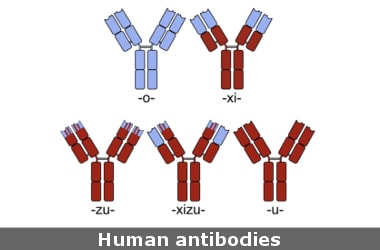 Scientists for the first time have produced human antibodies in the laboratory. Scientists for the first time have produced human antibodies in the laboratory.
They have developed revolutionary technique which can help in rapid development of new vaccines to treat a wide range of infectious diseases.
Antibodies mainly function in the humoral adaptive immune system by secreting antibodies to fight off infections caused by bacteria, viruses, and other invasive pathogens.
They are produced by body’s B cells (B lymphocytes).
When an individual B cell recognises a specific pathogen-derived antigen molecule, it proliferates and develops into plasma cells that secrete large amounts of antibody capable of binding to the antigen and fending off the infection.
To develop revolutionary technique, researchers had replicated the process of natural production of antibodies from B cells isolated from patient blood samples in the laboratory to produce specific antibodies.
They had found that B cells need a second signal to start proliferating and developing into plasma cells apart encountering a specific antigen at first instance.
For the second signal they used short DNA fragments called CpG oligonucleotides, which activate a protein named TLR9 inside B cells.
However, they found that treating patient-derived B cells with CpG oligonucleotides stimulates every B cell, not just the tiny fraction capable of producing a particular antibody.
So to overcome the problem they treated patient-derived B cells with tiny nanoparticles coated with both CpG oligonucleotides and an antigen.
With this technique, CpG oligonucleotides were only internalised into B cells recognising the specific antigen.
These cells were only ones in which TLR9 is activated to induce their proliferation and development into antibody-secreting plasma cells.
Importance of Discovery
- Researchers successfully demonstrated their approach using various bacterial and viral antigens, including the tetanus toxoid and proteins from several strains of influenza A.
- In each case, they were able to produce specific, high-affinity antibodies in just a few days.
- In some of the anti-influenza antibodies generated by the technique were able to neutralise multiple strains of the virus.
- They were able to generate anti-HIV antibodies from B cells isolated from HIV-free patients.
- This approach may help researchers to rapidly generate therapeutic antibodies for the treatment of infectious diseases and other conditions such as cancer.
|
▼ BS-VI compliant fuel emissions testing facility inaugurated [07-26-17]
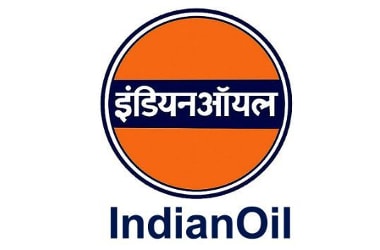 In its next step forward to provide BS-VI compliant fuel, government owned oil manufacturer Indian Oil Corporation (IOC) has inaugurated a BS-VI Emission Testing Facility at company’s Research & Development Centre in Faridabad on 24th July 2017. In its next step forward to provide BS-VI compliant fuel, government owned oil manufacturer Indian Oil Corporation (IOC) has inaugurated a BS-VI Emission Testing Facility at company’s Research & Development Centre in Faridabad on 24th July 2017.
Indian Oil claims that the new fuel testing facility is designed to test all types of fuels including petrol, diesel, ethanol-blended petrol, bio-diesel, CNG, LNG, Hydrogen-CNG and 2G-ethanol blends.
Ministry of Petroleum and Natural Gas had earlier announced to skip BS-V emission norms and directly implement BS-VI norms by April 2020.
In addition to generating emission data, the facilities will also evaluate the fuel blends for energy efficiency and engine durability.
Earlier in November 2016, Indian Oil had also dispatched BS-VI compliant diesel to OEMs like Honda Cars and Mahindra and Mahindra.
At the inauguration of the R&D centre, Dharmendra Pradhan, Minister of State for Petroleum and Natural Gas in his inaugural speech complimented senior scientists for developing a nano-additised battery for use in e-rickshaws.
This promotes better efficiency and longer life than commercially available batteries, he urged them to take its benefits to the market at the earliest.
The Indian auto-industry is dependent heavily on the availability of BS-VI compliant fuel to meet the April 2020 deadline.
The tough stance taken by the Supreme Court on the implementation of BS-IV norms last year indicates that no additional time will be provided to OEMs to roll out Euro-6 equivalent vehicles in India.
If reports are to be believed then almost every car and UV manufacturer have already started working towards rolling out BS-VI compliant vehicles.
|
▼ An antibiotic compound effective for countering Zika discovered [07-24-17]
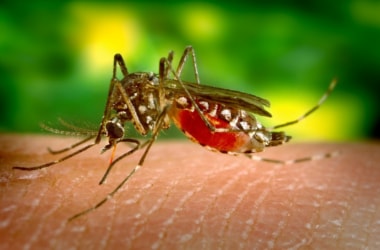 Researchers from a southeastern Spanish university announced the discovery of a molecule that could be used as a potential drug to fight the effects of a Zika virus infection. Researchers from a southeastern Spanish university announced the discovery of a molecule that could be used as a potential drug to fight the effects of a Zika virus infection.
San Antonio Catholic University of Murcia said that scientists belonging to its Bioinformatics and High-Performance Computing research group had found that a compound previously used as an antibiotic countered the symptoms of the mosquito-borne disease.
It’s a drug that had been withdrawn from the market because it had lost its potency as an antibiotic, but we know it can be administered to humans.
The molecular structure of the proteins involved in the Zika virus’ replication process was first described only a year ago.
Zika: Know More
- Zika virus is a member of the virus family Flaviviridae.
- It is spread by daytime-active Aedes mosquitoes, such as A. aegypti and A. albopictus.
- Its name comes from the Zika Forest of Uganda, where the virus was first isolated in 1947.
- Scientific name: Zika virus
- Higher classification: Flavivirus
- Rank: Species
- Did you know: Serological tests, including immunofluorescence assays and enzyme-linked immunosorbent assays may indicate the presence of anti-Zika virus IgM and IgG antibodies, according to WHO.
|
▼ Proxima Centuari sends powerful solar flare, not suited for life [07-21-17]
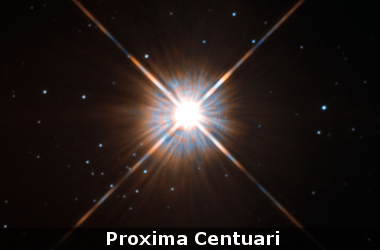 The Sun’s closest star neighbour, Proxima Centauri, a cool dwarf star situated a little over four light years away, may not be inclined to harbour habitable planets, if its temperament is anything to go by. The Sun’s closest star neighbour, Proxima Centauri, a cool dwarf star situated a little over four light years away, may not be inclined to harbour habitable planets, if its temperament is anything to go by.
AstroSat, along with other space and earth-based observatories, has detected a powerful solar flare sent out by this star.
At an energy of 10-raised-to-30 ergs, this explosion is about 100 times a typical flare.
If such a flare occurs in our Sun, it might have a devastating effect on power grids, interrupt broadcasts and electricity, affect electronic instruments, and cause excess UV radiation in space.
On 31 May 2017, three space-based observatories, the Astrosat, Chandra and Hubble Space Telescope, and the ground-based High Accuracy Radial velocity Planet Searcher (HARPS) observatory, participated in a multi-wavelength simultaneous observation campaign.
The mission teams of all satellites agreed to point to this star and spend a whole day watching this particular star.
Also, AstroSat is sensitive enough to easily catch a flare from a star that is so close to us, if it happens during the night time of the satellite and if the telescope is pointed towards this star, as was the case here.
Last year’s discovery of Proxima Centauri b - a planet orbiting Proxima Centauri and, more importantly, lying in its habitable ‘Goldilocks’ zone - had set everyone wondering if it could host life.
|
▼ Now, mAadhaar app to carry aadhaar card on smartphones! [07-21-17]
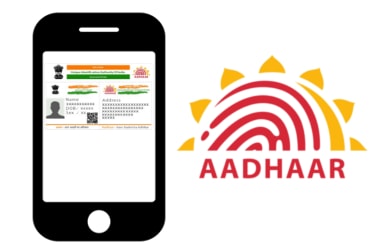 The Unique Identification Authority of India (UIDAI) has launched the mAadhaar app, a digital tool that allows holders of Aadhaar numbers to carry their in their smartphones. The Unique Identification Authority of India (UIDAI) has launched the mAadhaar app, a digital tool that allows holders of Aadhaar numbers to carry their in their smartphones.
The app syncs all information available on your Aadhaar, such as demographic details, name, date of birth, gender, postal address and photograph, after you link your Aadhaar with the app.
Now that is a convenient way to carry Aadhaar everywhere, all the time.
The app also allows you to lock and unlock your biometric data–a feature that was earlier possible only through the UIDAI web portal.
For safety and security reasons, the mAadhaar app uses a two-layer authentication.
The app has a Google Authenticator-like one-time password generation tool within the app for this purpose.
The OTPs generated by the tool are read by the app automatically; there is no way to enter them manually.
The app allows you to update your profile using the app, and the change reflects in the app once they are approved.
The mAadhaar app APK file is already available for download on Google Play marketplace, and has been launched only for Android users only for now; however, it might be released for iOS soon as well.
However, the app is currently in beta stage, notes UIDAI in its announcement tweet, and some of the features will be made available post future updates.
Notably, the app allows users to lock or unlock biometrics data.
Once a resident enables Biometric Locking system their biometric remains locked till the Aadhaar Holder chose to either Unlock it (which is temporary) or Disable the Locking system.
Interestingly, the mAadhaar app also comes with "Time-based One-Time Password (TOTP)" feature that can be used instead of SMS-based OTP.
With the mAadhaar app, users will be able to get the updated view of the profile upon completion of the update request and they will even be able to share QR code and password protected eKYC data to retrieve accurate demographic information from it instead of manual entry.
To recall, a new amendment to the tax proposals in the Finance Bill for 2017-18 made it mandatory from July 1 for anyone who has a PAN card to provide their Aadhaar number to the principal director general of income tax (systems) or DGIT (systems).
|
▼ US Navy successfully fires world’s first laser weapons system [07-20-17]
 US Navy test fired the world’s first operational and deployed laser weapons from a warship in the Persian Gulf. US Navy test fired the world’s first operational and deployed laser weapons from a warship in the Persian Gulf.
The world’s first active laser weapons system was fired from the Austin-class amphibious transport dock USS Ponce.
The laser successfully destroyed an unnamed aerial vehicle (UAV) and moving surface targets.
The new weapon releases photons - elementary particles which transmit light - at the speed of light silently hitting their target and burning it to a temperature of thousands of degrees.
Unlike depicted in movies such as Star Wars, the laser beam, essentially a narrow beam of focused light, is entirely invisible.
It operates in an invisible part of the electromagnetic spectrum so you don’t see the beam, it doesn’t make any sound, it’s completely silent and it’s incredibly effective at what it does.
Lasers are primarily intended for short-range defence (one to five miles) against aircraft, drones, and small boats.
Second-generation laser weapons systems are currently under development intended to take on faster targets such as incoming ballistic missiles.
During previous tests, lasers have taken out cruise missiles, mortars and other projectiles, according to the USDD.
The $40 million weapons system requires a crew of three and a supply of electricity (generated from its own small generator) to operate.
The 30-kilowatt, laser weapon, installed aboard the USS Ponce already in 2014, is extremely accurate and can be scaled depending on the target.
Unlike a traditional gun, a laser never runs out of bullets given that it has an infinite magazine as long as it is connected to a power source.
Furthermore, in comparison to missile-based defensive systems firing a laser is cheap at $4 million per shot.
The downside of laser weapons systems is that they consume a lot of energy on the one hand, and that they have difficulties penetrating dust, haze, and smoke on the other hand, which makes it difficult to effectively operate them under adverse weather conditions.
Possible counter-measure against laser weapons include fitting aircraft, boats and drones, with anti-laser coating or laser-deflecting mirrors.
An international agreement prohibits the targeting of human beings with laser weapons of any type.
|
▼ First successful child double hand transplant achieved by doctors! [07-20-17]
 The first child in the world to undergo a double hand transplant is now able to write, feed and dress himself, doctors have said, declaring the ground-breaking operation a success after 18 months. The first child in the world to undergo a double hand transplant is now able to write, feed and dress himself, doctors have said, declaring the ground-breaking operation a success after 18 months.
10-year old Zion Harvey, who underwent surgery to replace both hands in July 2015 is now even able to play baseball.
Eighteen months after the surgery, the child is more independent and able to complete day-to-day activities.
He continues to improve as he undergoes daily therapy to increase his hand function, and psychosocial support to help deal with the ongoing demands of his surgery.
Harvey had his hands and feet amputated at the age of two, following a sepsis infection. He also had a kidney transplant.
Harvey was already receiving drugs to suppress any immune reaction to his kidney, which was a key factor in his selection for the 10-plus hour hand transplant surgery.
Immunosuppressive drugs must be taken continuously to prevent a patient’s body from rejecting the transplant.
These drugs carry risks, including diabetes, cancer and infections.
The child has “undergone eight rejections of the hands, including serious episodes during the fourth and seventh months of his transplant.
All of these were reversed with immunosuppression drugs without impacting the function of the child’s hands.”
Harvey continues to take four immunosuppression drugs and a steroid.
Before the double hand transplant, Harvey had limited ability to dress, feed and wash himself through adapted processes, using his residual limbs or specialist equipment.
The donor hands became available in July 2015 from a deceased child.
Within days of the surgery, Harvey discovered he could move his fingers, using the ligaments from his residual limbs.
Eight months after the operation, Harvey was using scissors and drawing with crayons.
Within a year, he could swing a baseball bat using both hands. He also threw out the first pitch at a Baltimore Orioles game last August.
Regular meetings with a psychologist and a social worker were part of the recovery process, aimed at helping him cope with his new hands.
Scans have shown his brain is adapting to the new hands, developing new pathways to control movement and feel sensations.
The world’s first double hand transplant in a child has been successful under carefully considered circumstances.
The first successful hand transplant in an adult was carried out in 1998.
|
▼ SOHUM: Low cost hearing screening device for infants [07-18-17]
 The Union Ministry of Science and Technology has launched SOHUM, an indigenously developed low-cost hearing screening device for newborns. The Union Ministry of Science and Technology has launched SOHUM, an indigenously developed low-cost hearing screening device for newborns.
The innovative medical device has been developed by the School of International Biodesign (SIB) startup Sohum Innovation Labs India Pvt Ltd under Department of Biotechnology (DBT) supported (SIB).
The Sohum aims to make this battery-operated non-invasive screening device available across the country to minimise or reverse the hearing loss damage.
It is a low cost portable device which uses brain-stem auditory evoked response, a best screening choice recommended by the American Association of Pediatrics and National Health Services of UK.
It measures auditory brain waves via three electrodes placed on the baby’s head. When stimulated, electrodes detect electrical responses generated by the brain’s auditory system.
If there is no response, it indicates child cannot hear.
Once it is detected at quite an early age, measures can be taken to prevent other problems such as impaired communication skills and even possible mental illness.
It is battery operated device and is non-invasive, it doesn’t require babies to be sedated, which is risky, testing in process at present.
It has in-built algorithm that filters out ambient noise from the test signal. This is important because health clinics can be crowded and noisy.
SIB: Know More
- School of International Biodesign SIB is a flagship Program of the DBT aimed to develop innovative and affordable medical devices as per India’s unmet clinical needs and to train the next generation of medical technology innovators in India.
- It is implemented jointly at All India Institutes of Medical Sciences (AIIMS) and IIT Delhi in collaboration with International partners.
- Biotech Consortium India Limited manages techno-legal activities of the Program.
- It serves as a valuable contribution to the Make in India campaign of the Government.
|
▼ Now, scientists invent spider silk made of water! [07-18-17]
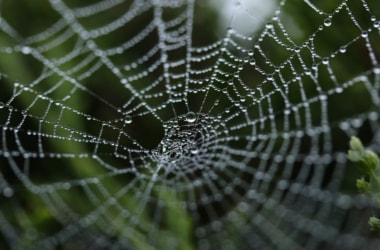 Scientists from the University of Cambridge have developed super-stretchy and strong artificial (synthetic) spider silk, almost entirely composed of water. Scientists from the University of Cambridge have developed super-stretchy and strong artificial (synthetic) spider silk, almost entirely composed of water.
The synthetic spider silk mimics properties of spider silk, one of nature’s strongest materials for a range of applications such as making eco-friendly textiles and sensors.
The fibres of the synthetic spider silk are spun from hydrogel, a soupy material which is 98% water.
The remaining 2% of the hydrogel is made of naturally available silica and cellulose.
These materials are held together in a network by barrel-shaped molecular “handcuffs” known as cucurbiturils.
The chemical interactions between the different components enable to pull long fibres from the gel.
The water from hydrogel evaporates after it is stretched for 30 seconds, leaving a strong fibre which is both strong and stretchy.
Spider Silk: Know More
- The fibres of the synthetic spider silk are extremely thin threads and are of few millionths of a metre in diameter.
- They resemble miniature bungee cords and can absorb large amounts of energy. They are sustainable, non-toxic, less energy-intensive and can be made at room temperature.
- The fibres are capable of self-assembly at room temperature, and are held together by supramolecular host, where atoms share electrons.
- They can support stresses in the range of 100 to 150 megapascals, which is similar to other synthetic and natural silks.
|
▼ A treasure trove in the sea discovered by GSI [07-18-17]
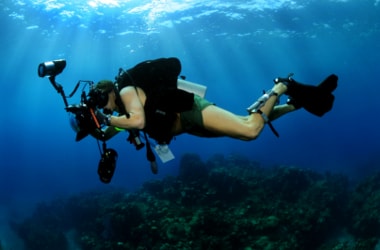 Scientists from the Geological Survey of India (GSI) have discovered the presence of millions of tonnes of precious metals and minerals deep under the waters that surround peninsular India. Scientists from the Geological Survey of India (GSI) have discovered the presence of millions of tonnes of precious metals and minerals deep under the waters that surround peninsular India.
The huge presence of marine resources was first identified off Mangaluru, Chennai, Mannar Basin, Andaman and Nicobar Islands and around Lakshadweep in early 2014.
The amount of lime mud, phosphate-rich and calcareous sediments, hydrocarbons, metalliferous deposits and micronodules that geologists came across was a clear indication that deeper and more extensive exploration could lead to a larger treasure trove.
After three years of exploration, GSI has generated 181,025 square kilometres of high-resolution seabed morphological data and established the occurrence of more than 10,000 million tonnes of lime mud within the Exclusive Economic Zone of India.
It has also confirmed the presence of phosphate sediment off Karwar, Mangaluru and Chennai coasts, gas hydrate in the channel-levee system of Mannar Basin off the Tamil Nadu coast.
Additionally, it found cobalt-bearing ferro-manganese crust from the Andaman Sea and micro-manganese nodules around Lakshadweep Sea.
Three state-of-the-art research vessels - Samudra Ratnakar, Samudra Kaustabh and Samudra Saudikama - carried out the 'High Resolution Seabed Mapping and Natural Resource Evaluation'.
The main objectives were to identify potential zones of favourable mineralisation and evaluate marine mineral resources.
GSI: Know More
- The GSI was established in 1851 and is one of the oldest of such organisations in the world and the second oldest survey institution in the country.
- It is the prime provider of basic earth science information to the government, industry and the general public.
- Its main functions is related to creation and updation of national geoscientific information and mineral resource assessment.
|
▼ Indian electrification project for Agaween village in Egypt [07-17-17]
 India has launched a solar project with state-of-the-art technology to electrify a remote village in Egypt. India has launched a solar project with state-of-the-art technology to electrify a remote village in Egypt.
The Solar Electrification Project, an off-grid system that is ideal for remote locations, has been launched at Agaween village in the Western Desert in Matrouh Governorate, close to the Libyan border.
India provided all the solar panels and sub-systems, machinery, equipment and technical support, as well as training for technicians.
The Egyptian government provided the location for implementation of the project.
The project was inaugurated by India’s Ambassador to Egypt Sanjay Bhattacharyya and Major General Alla Fathi Abou Zeid, Governor of Matrouh.
The project harnesses the sun and enriches the life of the villagers.
The project is a demonstration of India’s technical capabilities, especially in renewable energy, and can be replicated at other locations in Egypt.
The total output of the project is 8.8 kilowatt. The project has the ability to electrify the whole village.
The project will not only provide electricity to Agaween village but also give training to workers on how to maintain and adjust the solar energy systems to help forming groups of well—trained workers in the governorate.
The Solar Electrification Project at Agaween will provide electricity to 40 houses, a school, a mosque and a community centre.
Indo-Egyptian Ties: Know More
- India and Egypt have agreed to collaborate in the field of information and communications technology; agriculture; biotechnology; renewable and non-conventional energy.
- Also on the anvil are skills development and full participation of the private sector enterprises in these endeavors.
- There is cooperation in the field of space utilizing India's expertise in launching satellites and other advances in space technology.
- Also in the offing are joint projects on space application under existing institutional arrangements.
- The completion of two Indian development projects in Egypt is another achievement for bilateral ties as is the establishment of a textile vocational training centre in Shubra el-Kheima, which would benefit the people of Egypt, and the solar electrification of Agaween Village.
|
▼ Now 3D silicone heart to make a difference for cardiac patients [07-17-17]
 Scientists have developed a 3D-printed soft silicone heart that closely resembles and functions like the human organ, and could help save lives of people who suffer from cardiac failure. Scientists have developed a 3D-printed soft silicone heart that closely resembles and functions like the human organ, and could help save lives of people who suffer from cardiac failure.
About 26 million people worldwide suffer from heart failure.
The soft artificial heart weighs 390 grams and has a volume of 679 cubic centimetres.
It is a silicone monoblock with complex inner structure/
The artificial heart has a right and a left ventricle, though they are not separated by a septum but by an additional chamber.
This chamber is inflated and deflated by pressurised air and is required to pump fluid from the blood chambers.
|
▼ Saraswati: Supercluster of galaxies discovered by Indian scientists! [07-14-17]
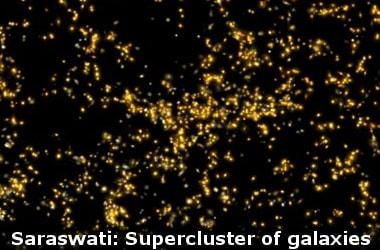 Indian scientists have discovered Saraswati, a large supercluster of galaxies located in the direction of the constellation Pisces. Indian scientists have discovered Saraswati, a large supercluster of galaxies located in the direction of the constellation Pisces.
This is at a distance of 4,000 million (400 crore) light years away from Earth.
A team of astronomers from the Inter-University Centre for Astronomy and Astrophysics (IUCAA) and Indian Institute of Science Education and Research (IISER), Pune, and members of two other Indian universities discovered this supercluster of galaxies.
Supercluster is a chain of galaxies and galaxy clusters, bound by gravity, often stretching to several hundred times the size of clusters of galaxies, consisting of tens of thousands of galaxies.
This newly-discovered Saraswati supercluster, extends over a scale of 600 million light years and may contain the mass equivalent of over 20 million billion suns.
This was visible in a large spectroscopic survey of distant galaxies, known as the Sloan Digital Sky Survey.
This supercluster is clearly embedded in a large network of cosmic filaments traced by clusters and large voids.
A few large superclusters have been reported, for example the Shapley Concentration or the Sloan Great Wall in the nearby universe, while the Saraswati supercluster is far more distant one.
The will help to shed light on the perplexing question of how such extreme large-scale, prominent matter-density enhancements had formed billions of years in the past when the mysterious Dark Energy had just started to dominate structure formation.
To understand galaxy formation and evolution, one needs to identify these superclusters and closely study the effect of their environment on the galaxies.
This is a new research area and the discovery will enhance this field of research.
They added that when astronomers look far away, they see the universe from long ago, since light takes a while to reach us.
The Saraswati supercluster is observed as it was when the Universe was 10 billion years old.
|
▼ State of the art Doppler Weather Radar in Kochi [07-14-17]
 An indigenously developed S-band doppler weather radar (DWR) of India Meteorological Department (IMD) was commissioned at Palluruthy in West Kochi, Kerala. An indigenously developed S-band doppler weather radar (DWR) of India Meteorological Department (IMD) was commissioned at Palluruthy in West Kochi, Kerala.
It has been manufactured by Bharat Electronics Limited (BEL) based on the indigenous technology provided by ISRO.
It joins the latest in a chain of 27 such advanced radars already installed in various parts of the country.
The S-band DWR is capable of predicting weather events such as storms and cyclones, other severe weather conditions occurring in 500-km radius from Kochi with increased accuracy.
Doppler weather radar is an observational tool for monitoring and predicting severe weather events such as hailstorms, thunder storms, cyclones and tornados.
It uses the Doppler effect by bouncing a microwave signal off a desired target to produce velocity data. This data helps in analyzing object’s motion by altered the frequency of the returned signal.
It mainly gives information about wind velocity and also about precipitation.
DWR can provide area specific rain and storm warnings which are beneficial for disaster management and emergency response, aviation and related services.
It can be used for wind speed measurements during cyclones and thunderstorms which is not possible in conventional weather radar.
Thus, it helps in providing improved warning and better weather forecasts.
Doppler effect is an increase (or decrease) in the frequency of sound, light, or other waves as the source and observer move towards (or away from) each other.
|
▼ National Strategic Plan for Malaria Elimination launched [07-13-17]
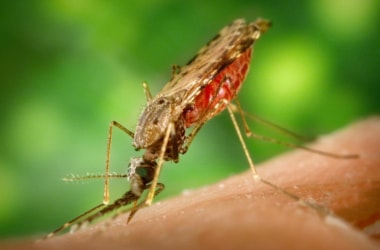 Shri J P Nadda, Union Minister of Health and Family Welfare launched the National Strategic Plan for Malaria Elimination (2017-22). Shri J P Nadda, Union Minister of Health and Family Welfare launched the National Strategic Plan for Malaria Elimination (2017-22).
The Strategic Plan gives year wise elimination targets in various parts of the country depending upon the endemicity of malaria in the next 5 years.
The government would like to eliminate malaria by 2027 and urged the states for active cooperation.
National Framework for Malaria Elimination (NFME) outlined India’s commitment for eliminating malaria by 2030.
The launch of the National Strategic Plan for Malaria Elimination (2017-22) which gives strategies is working towards the ultimate goal of elimination of malaria by 2030.
National Strategic Plan is for five years.
Since the past three years focus is on Long Lasting Impregnated Nets (LLINs) with more 14 million nets disbursed and 25 million nets are to be distributed.
Salient Features
The strategies involve strengthening malaria surveillance,
Also part of the plan is establishing a mechanism for early detection and prevention of outbreaks of malaria, promoting the prevention of malaria.
This is through the use of Long Lasting Impregnated Nets (LLINs), effective indoor residual spray and augmenting the manpower and capacities for effective implementation for the next five years. Inter sectoral coordination is the key.
Around one child dies of malaria every two minutes and the burden is the heaviest in the African region. India has the third highest malaria burden in the world.
|
▼ International Rice Research Institute adds to rice value chain [07-13-17]
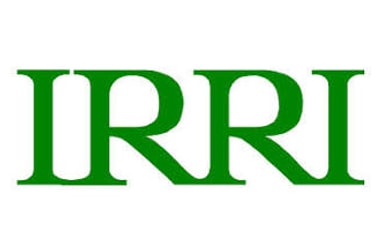 The Union Cabinet chaired by the Prime Minister Shri Narendra Modi has approved the establishment of the International Rice Research Institute (IRRI), South Asia Regional Centre (ISARC). The Union Cabinet chaired by the Prime Minister Shri Narendra Modi has approved the establishment of the International Rice Research Institute (IRRI), South Asia Regional Centre (ISARC).
This is at campus of National Seed Research and Training Centre (NSRTC) in Varanasi.
Under the proposal, a Centre of Excellence in Rice Value Addition (CERVA) will be set up in Varanasi.
This will include a modern and sophisticated laboratory with capacity to determine quality and status of heavy metals in grain and straw.
The Centre will also undertake capacity building exercises for stakeholders across the rice value chain.
This Centre will be the first international Centre in the eastern India and it will play a major role in harnessing and sustaining rice production in the region.
It is expected to be a boon for food production and skill development in the eastern India and similar ecologies in other South Asian and African countries.
For setting up of the Centre, A Memorandum of Agreement, will be signed between DAC&FW and IRRI, Philippines.
The Department of DAC&FW will provide physical space for laboratories, offices, training classes, etc. with associated infrastructure and land at NSRTC, Varanasi.
The Centre will be commissioned within six months.
Benefits from ISARC
- The Centre will help in utilizing the rich biodiversity of India to develop special rice varieties.
- This will help India to achieve higher per hectare yields and improved nutritional contents.
- India’s food and nutritional security issues will also be addressed.
- The Centre will support in adopting value chain based production system in the country.
- This will reduce wastage, add value and generate higher income for the farmers.
- The farmers in Eastern India will benefit in particular, besides those in South Asian and African countries.
Management of ISARC- ISARC will operate under the governance of the IRRI Board of Trustees who will appoint an appropriate IRRI staff member as Director.
- A Coordination Committee will be headed by Director General, IRRI as Chair and Secretary, Government of India, Department of Agriculture, Cooperation and Farmers Welfare (DACFW) as Co-Chair.
- The other members of Coordination Committee are Deputy Director General (Crop Sciences), ICAR; Director, NSRTC; IRRI representative in India, representative of Government of UP and representatives of Governments of Nepal & Bangladesh and Private Sector.
|
▼ Scientists discover smallest star in the universe [07-13-17]
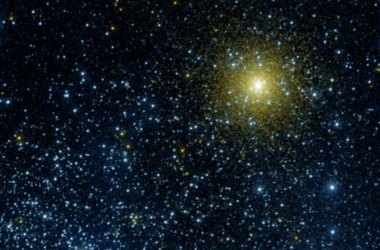 Scientists have discovered the smallest-known star in the universe - slightly larger than Saturn in size - which may possibly have Earth-sized planets with liquid water in its orbit. Scientists have discovered the smallest-known star in the universe - slightly larger than Saturn in size - which may possibly have Earth-sized planets with liquid water in its orbit.
Researchers from University of Cambridge in the U.K. identified the star located about 600 light years away, called EBLM J0555-57Ab as it passed in front of its much larger companion.
The star is likely as small as stars can possibly become, as it has just enough mass to enable the fusion of hydrogen nuclei into helium, researchers said.
With a size just a sliver larger than that of Saturn, the gravitational pull at its stellar surface is about 300 times stronger than what humans feel on Earth.
The discovery is also the best possible candidates for detecting Earth-sized planets which can have liquid water on their surfaces, such as TRAPPIST-1, an ultracool dwarf surrounded by seven temperate Earth-sized worlds.
This reveals how small stars can be.
Had this star formed with only a slightly lower mass, the fusion reaction of hydrogen in its core could not be sustained, and the star would instead have transformed into a brown dwarf.
The star was identified by WASP, a planet-finding experiment run by several universities.
This star is smaller, and likely colder than many of the gas giant exoplanets that have so far been identified, researchers said.
WASP: Know More
- Abbreviation: WASP
- Purpose: Search for distant planets
- Region served: La Palma and Sutherland
- Membership: Eight universities
- Website: wasp-planets.net
- www.superwasp.org
|
▼ Researchers find Martian soil toxic for life! [07-12-17]
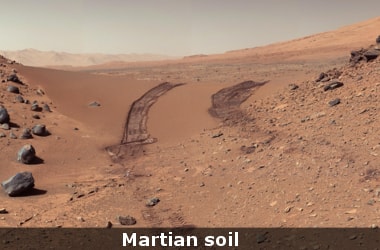 As per a research conducted by scientists in the United Kingdom, Mars soil has chemical compounds called perchlorates that can wipe out living organisms. As per a research conducted by scientists in the United Kingdom, Mars soil has chemical compounds called perchlorates that can wipe out living organisms.
The discovery has major implications for hunt for alien life on the red planet as it means any evidence is likely to be buried deep underground.
The study was published in the journal Scientific.
The research was driven by the discovery of powerful oxidants known as perchlorates in the Martian soil a few years back.
Hints of perchlorates first showed up in tests performed by NASA’S Viking lander missions 40 years ago.
However, the fact was recently confirmed by NASA’s Phoenix lander and Mars rover, Curiosity.
In 2015, the Mars Reconnaissance Orbiter spotted signs of perchlorates.
Many scientists suspected that perchlorates would be toxic for microbial Martians, however, alien bacteria might find a way to use the chemicals as an energy source.
The researchers looked at what happened to Bacillus subtilis, a common soil bacterium and regular Earthly contaminant found on space probes, when it was mixed with magnesium perchlorate and blasted with ultraviolet rays similar to those witnessed on Mars.
It was found that the bugs were wiped out twice as fast when perchlorate was present.
Further tests found that the UV rays broke down the perchlorate into other chemicals, namely hypochlorite and chlorite.
In addition, the researchers also followed-up with another round of experiments that looked at the toxic effects of iron oxides and hydrogen peroxide, which are also found in Mars soil.
As per further tests, when the bacteria were hit with UV rays in the presence of perchlorates, iron oxide and peroxide, the bugs were killed 11 times faster than with perchlorates alone.
|
▼ Miniature version of Saturn developed [07-12-17]
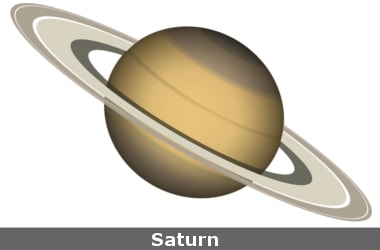 Scientists from Northwestern University in the United States have created miniature versions of Saturn, complete with rings, by electrifying tiny droplets of fluids. Scientists from Northwestern University in the United States have created miniature versions of Saturn, complete with rings, by electrifying tiny droplets of fluids.
When a drop of electrically conductive liquid is exposed to an electric field, the droplet responds by forming two electrically charged poles.
In the previous research it was found that these poles can get pulled towards the sources of the electric field, taking on cone shapes.
If the pull is strong enough, the tips of the cones can spray jets of droplets.
This effect is known as electro-spraying.
In the latest experiments, researchers explored the outcomes seen after drops of liquid is submerged in more electrically conductive fluids-specifically, drops of silicone oil suspended in castor oil.
When an electric field is applied to drop of silicone oil, it was observed that drop flattens and emits rings of fluid from its equator that break up into droplets.
If an electric field is strong enough, the equators of these squashed drops emit concentric rings of droplets, making the drops look like miniature versions of Saturn.
In these experiments, drops of silicone oil about 1 millimetre wide generated droplets that were about 100 times smaller.
The future advance research may pave the way for generating microscopic and uniform particles and capsules which are used in products such as drugs, inks, cosmetics and paints.
It will also explore new materials that can be used to produce “ring of particles” effect.
|
▼ GST Rates Finder app launched [07-10-17]
 Government has launched an App - GST Rates Finder to verify the accurate tax rate on commodity and services under the Goods and Services Tax (GST) regime. Government has launched an App - GST Rates Finder to verify the accurate tax rate on commodity and services under the Goods and Services Tax (GST) regime.
This will empower not only the taxpayers, but every citizen of the nation, to ascertain the correct GST rate on goods and services.
Through this app, user can determine GST rate by entering the name of the commodity or service.
The search result will list all the Goods and Services containing the name which was typed in the search box.
A taxpayer can search for applicable CGST, SGST, UTGST rate and Compensation Cess on a supply.
Finance Ministry said, this mobile app can be downloaded on any smart phone and can work in offline mode, once downloaded.
The application has been launched on Android platform, and will soon be available on iOS platform.
Central Board of Excise and Customs (CBEC) has taken these initiatives for ease of doing business under the GST regime.
CBEC has also provided a GST rate finder on its portal - cbec-gst.gov.in to help taxpayers know applicable GST rate on their supplies.
|
▼ SWAYAM takes high quality education to every doorstep [07-10-17]
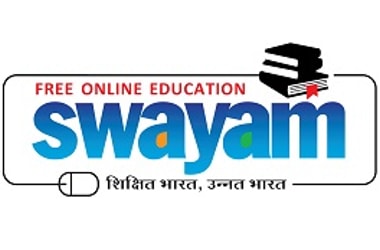 President of India Shri Pranab Mukherjee has launched the SWAYAM, the portal that takes high quality education to the doorstep of everyone. President of India Shri Pranab Mukherjee has launched the SWAYAM, the portal that takes high quality education to the doorstep of everyone.
This was in the National Convention of Vice Chancellors of all Universities in the Country, and Heads of IISc/IITs/IIMs/NITs/IIITs at Vigyan Bhawan.
Along with this, he has also launched the SWAYAM Prabha – the 32 DTH channels operationalised for telecasting high quality educational content free of charge using the GSAT-15 satellite transponders.
The function was organised on the eve of the Guru Poornima, a day for salutation to the teachers.
With the launch of SWAYAM, India has become one of the few countries in the World which has its own online interactive learning platform that provides, not only video lectures, reading material but also assignments/quizzes that could end up in securing credits after completing the assessment system.
More than 400 Courses are available on SWAYAM covering all the engineering and non-engineering subjects at undergraduate and post-graduate levels.
The UGC has already issued Regulation that allows transfer of credits earned through the courses done through SWAYAM into the academic record of the students.
It is now possible for the students and others to take courses of the prestigious IITs or IIMs without formally studying there.
The platform has been constructed by Microsoft with totally indigenous efforts.
The courses are available on www.swayam.gov.in.
Nearly 700 Vice Chancellors from across the Country are participating in the national convention that started on 8th July and will end on 10th July.
This is the biggest ever gathering of heads of all the higher educational institutions in the Country.
Many digital initiatives taken under the National Mission for Education through ICT have been showcased in the meeting.
The meeting ended with adoption of “ Programme 17 for 17” : - A 17 point action plan for 2017 – for building digital campuses and high quality education.
The action plan covers measures like universal adoption of digital education, digital financial transactions in the campuses from the current academic year.
Three Books have been launched on the occasion – account of NMEICT initiatives, list of 323 courses which are on offer in the current academic semester and a eBook of presentation of digital best practices by more than 500 institutions.
SWAYAM Prabha Channel
- The SWAYAM Prabha channels are available for free for anyone who has a set top box to receive either DD Free Dish or DishTV.
- These channels transmit 4 hours of fresh content every day, and contain lectures from the best teachers in the Country.
- There is no monthly charge for viewing these channels.
- These channels include the IIT-PAL channels which were intended to help students taking the prestigious JEE examination, taught by the IIT faculty.
|
▼ Jigyasa: Student scientist connect programme introduced [07-7-17]
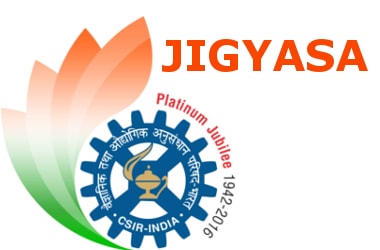 Jigyasa, a student- scientist connect programme was officially launched in the national capital. Jigyasa, a student- scientist connect programme was officially launched in the national capital.
Council of Scientific and Industrial Research (CSIR), has joined hands with Kendriya Vidyalaya Sangathan (KVS) to implement this programme.
The focus is on connecting school students and scientists so as to extend student’s classroom learning with that of a very well planned research laboratory based learning.
Inspired by Prime Minister Narendra Modi’s vision of a new India and “Scientific Social Responsibility (SSR)” of scientific community and institutions, Jigyayasa was launched on the day which also coincides with the birthday of Shri Shyama Prasad Mukherjee.
Mukherjee who is an inspirational figure and a role model for all Indians.
CSIR has been contributing for several decades for socio-economic development in the country.
It has been through development and deployment of knowledge base focused at Technology and Innovation. CSIR has also been playing a key role in human resource development, in particular training of the young researchers through Ph. D. programmes in diverse fields.
The “JIGYASA” would inculcate the culture of inquisitiveness on one hand and scientific temper on the other, amongst the school students and their teachers.
The Programme is expected to connect 1151 Kendriya Vidyalayas with 38 National Laboratories of CSIR targeting 100,000 students and nearly 1000 teachers annually.
The program will also enable the students and teachers to practically live the theoretical concepts taught in science by visiting CSIR laboratories and by participating in mini-science projects.
Jigyasa Components
- Student Residential Programmes;
- Scientists as Teachers and Teachers as Scientists;
- Lab specific activities / Onsite Experiments;
- Visits of Scientists to Schools/Outreach Programmes;
- Science and Maths Clubs;
- Popular Lecture Series/ demonstration programme at Schools;
- Student Apprenticeship Programmes;
- Science Exhibitions;
- Projects of National Children’s Science Congress;
- Teacher Workshops; and
- Tinkering Laboratories
“JIGYASA” is a major initiative taken up by CSIR at national level, during its Platinum Jubilee Celebration Year. CSIR is widening and deepening its Scientific Social Responsibility further with the programme.
|
▼ Scientists scan brain wiring for the first time [07-7-17]
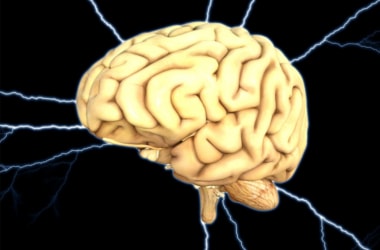 The world’s most detailed scan of the brain’s internal wiring has been produced by scientists at Cardiff University. The world’s most detailed scan of the brain’s internal wiring has been produced by scientists at Cardiff University.
The detailed scan has been carried out at Cardiff, Nottingham, Cambridge and Stockport, as well as at London England and Ontario.
The findings were published on 5 July 2017.
The scan took around 45 minutes and seemed unremarkable.
The scan showed fibres in the white matter called axons.
These are the brain’s wiring which carry billions of electrical signals.
The scan not only showed the direction of the messaging but also the density of the brain’s wiring.
The extraordinary images produced in Cardiff are the result of a special MRI scanner - one of only three in the world.
The MRI machine reveals the fibres that carry all the brain’s thought processes.
This detailed scan of brain’s internal wiring will help increase understanding of a range of neurological disorders and can be used instead of invasive biopsies.
Conventional scans clearly show lesions (areas of damage) in the brain of patients.
But this advanced scan, showing axonal density, can help explain how the lesions affect motor and cognitive pathways that can trigger movement problems and extreme fatigue.
The scanner itself is not especially powerful, but its ability to vary its magnetic field rapidly with position can map the wires or the axons so thinly that it would take 50 of them to match the thickness of a human hair.
The scanner is currently being used for research into many neurological conditions including Multiple Sclerosis (MS), schizophrenia, dementia and epilepsy
|
▼ World's longest 100Gbps technology based submarine system! [07-6-17]
 Reliance Jio on 29 June 2017 announced the launch of the Asia-Africa-Europe (AAE-1) submarine cable system. Reliance Jio on 29 June 2017 announced the launch of the Asia-Africa-Europe (AAE-1) submarine cable system.
AAE-1 is claimed to be the world’s longest 100Gbps technology-based submarine system.
The cable will stretch from Marseille in France to Hong Kong, covering 25000 km.
It will have 21 cable landings across Asia and Europe.
The project is a combination of leading telecom service providers from Europe, the Middle East and Asia.
It will feature diversified Points of Presence (PoP) in Asia (Hong Kong and Singapore) with three onward connectivity options in Europe (France, Italy and Greece).
AAE-1 will help cater to the increasing demand for video centric data in India and other regions.
The cable system will pass through critical hubs, serving the demand for video centric data bandwidth.
This supports all types of communications, applications and content within India and beyond.
It will also seamlessly link with other cable systems and fibre networks to deliver direct access to all global markets.
The submarine cable system will come with 100Gbps transmission technology and a minimum design capacity of 40 Tbps.
Its advanced design and route will offer one of the lowest latency routes between Hong Kong, India, Middle East and Europe.
Using it, Reliance Jio will provide the Network Operations & Management for AAE-1 Cable System.
Its Network Operations Center (NOC) will use a state of the art facility in Navi Mumbai.
The new terabit capacity and 100Gbps direct connectivity to global content hubs and interconnection points ensure that Jio will continue to offer its customers the most exceptional high-speed internet and digital service experience.
|
▼ NASA's DART mission: Countering cosmic impact [07-6-17]
 NASA is developing the first-ever mission that will work as a planetary defence mechanism against potential cosmic body impacts in the future. NASA is developing the first-ever mission that will work as a planetary defence mechanism against potential cosmic body impacts in the future.
The mission, The Double Asteroid Redirection Test (DART), is being designed, built and managed by the John Hopkins Applied Physics Laboratory.
The mission has moved from concept development to preliminary design phase, following NASA’s approval on 23 June 2017.
It is the first-ever design that will have the capability of deflecting a near-Earth asteroid.
It would demonstrate the kinetic impactor technique by knocking the hazardous object into a different flight path that would not threaten the planetary defence.
The approval by NASA advances the project towards a historic test with a non-threatening small asteroid.
The target for DART would be an asteroid that will have a distant approach to Earth in October 2022 and then again in 2024.
The asteroid called Didymos (Greek for twin) consists of two bodies: Didymos A, which is about 780 metres in size, and Didymos B, which is a smaller asteroid about 160 metres in size.
DART would impact only smaller of the two bodies, Didymos B, the composition of which is unknown.
The size is typical of asteroids that could potentially create regional effects should they impact Earth.
After launch, DART would fly to Didymos and use an APL- developed onboard autonomous targeting system to aim itself at Didymos B.
The spacecraft is expected to strike the smaller body at a speed that would be about nine times faster than a bullet, around six kilometres per second.
Earth-based observatories would be able to see the impact and the resulting change in the orbit of Didymos B around Didymos A, allowing scientists to better determine the capabilities of the kinetic impact as an asteroid mitigation strategy.
The kinetic impact technique works by changing the speed of a threatening asteroid by a small fraction of its total velocity.
By doing it well before the predicted impact, the small nudge will add up over time to a big shift of the asteroid’s path away from Earth.
DART is a critical step in demonstrating we can protect our planet from a future asteroid impact. As we don’t know that much about their internal structure or composition, this experiment needs to be performed on a real asteroid.
|
▼ MERIT app, e-bidding portal to rejuvenate energy sector [07-6-17]
 Union Minister of State for Power, Coal, New & Renewable Energy and Mines, Piyush Goyal has launched the ‘MERIT app (Merit Order Despatch of Electricity for Rejuvenation of Income and Transparency)’. Union Minister of State for Power, Coal, New & Renewable Energy and Mines, Piyush Goyal has launched the ‘MERIT app (Merit Order Despatch of Electricity for Rejuvenation of Income and Transparency)’.
Also launched was the e-bidding portal for offering an e-Bidding solution to States.
The app and the portal would help the states to select Independent Power Producers (IPPs) for procurement of power by transferring their domestic coal under the scheme of flexibility in utilisation of domestic coal.
The launch of the app and the portal is aimed at promoting the vision of ‘Minimum Government and Maximum Governance’ through ‘Speed, Skill and Scale’.
It would result in optimum utilisation of Coal and would save the consumer around INR 20,000 crores in the next five years.
It would increase the transparency and accountability.
The advantages of MERIT app
- Empowers the consumer.
- Promotes participative governance.
- Transparency in information dissemination relating to marginal variable cost and source wise purchase of electricity.
- Promotes economy and efficiency in operation.
- Optimises the procurement costs. Facilitates renewable integration and handling of the variability and uncertainty of renewables.
Union cabinet in May 2016 permitted flexibility in utilisation of domestic coal amongst power generating stations. Following which the Central Electricity Authority (CEA) has issued the methodology for utilisation of domestic coal within State/Central generating stations on 8th June 2016. The ministry of power then came up with the methodology for use of transferred coal in Independent Power Producers (IPPs) generating stations in February 2017.
|
▼ North Korea tests might, fires ICBM Hwasong-14 [07-6-17]
 North Korea has claimed that it has successfully test-fired its first intercontinental ballistic missile (ICBM) Hwasong-14 into waters near Sea of Japan. North Korea has claimed that it has successfully test-fired its first intercontinental ballistic missile (ICBM) Hwasong-14 into waters near Sea of Japan.
The claim was confirmed by United States.
The launch appeared to be North Korea’s most successful missile test since its ballistic missile programme gathered pace in the late 1990s.
The successful test also marks North Korea’s the final step in becoming confident and powerful nuclear state that can strike anywhere on Earth.
Based on missile’s height and trajectory path, US scientists claim that missile could potentially be powerful enough to reach Alaska.
The missile had reached an altitude higher and flew longer than any of the North Korea’s previous similar tests.
The missile had landed in Japan’s exclusive economic zone.
The ICBM testing represents a new escalation of the threat to US and its allies and partners, the region and the world.
ICBM: Know More
- An ICBM is a missile launched by a land-based system that is intended to carry nuclear payloads.
To qualify as an ICBM, a missile must have a minimum range of 5,500km. - The most significant difference between an ICBM and other ballistic missiles is its greater range and speed.
- It enables countries to strike exceptionally distant targets with minimum warning.
|
▼ Indigenously developed missile QR-SAM meets with success [07-4-17]
 India successfully test-fired its indigenously developed quick reaction surface-to-air short range missile (QR-SAM). India successfully test-fired its indigenously developed quick reaction surface-to-air short range missile (QR-SAM).
The sophisticated missile was test fired from a truck-mounted canister launcher from launch complex-3 at the Integrated Test Range (ITR) at Chandipur.
It was the second successful developmental trial of the state-of-the-art missile with an aerial target.
The first test launch of the missile was conducted in June 2017 from the same base.
Features of the missile
- The QR-SAM has been developed by the Defence Research and Development Organisation (DRDO) and other establishments.
- It has been designed to be a quick reaction missile.
- It is an all-weather weapon system capable of tracking and firing.
- The missile has a strike range of 25 to 30 km.
- It can engage multiple targets.
|
▼ World's sharpest laser invented by German scientists [07-4-17]
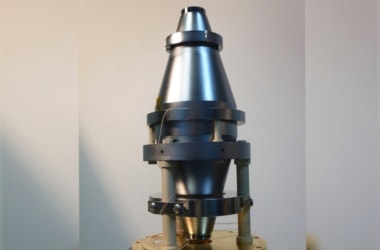 Scientists from Physikalisch-Technische Bundesanstalt (PTB) in Germany have developed the world’s sharpest laser with record - breaking precision. Scientists from Physikalisch-Technische Bundesanstalt (PTB) in Germany have developed the world’s sharpest laser with record - breaking precision.
This precision can be useful for various applications such as optical atomic clocks, radioastronomy, precision spectroscopy, testing the theory of relativity and carry out new precision measurements on ultracold atoms.
The laser (light amplification by stimulated emission of radiation) is a device that emits light through a process of optical amplification based on the stimulated emission of electromagnetic radiation.
Major difference between laser and other sources of light is that, laser emits light coherently.
Laser light is used in numerous applications in industry, medicine and information technologies.
It also brought about a real revolution in fields of research and in metrology, astronomy, and medical treatment.
Theoretically, laser light has only one colour, wavelength or frequency.
In reality, however, there is always a certain linewidth.
This newly developed laser has linewidth of only 10 miliHertz (0.01 Hz), - closer to the ideal laser than ever before.
Researchers also have found out that the emitted laser light’s frequency was more precise than what had ever been achieved before.
|